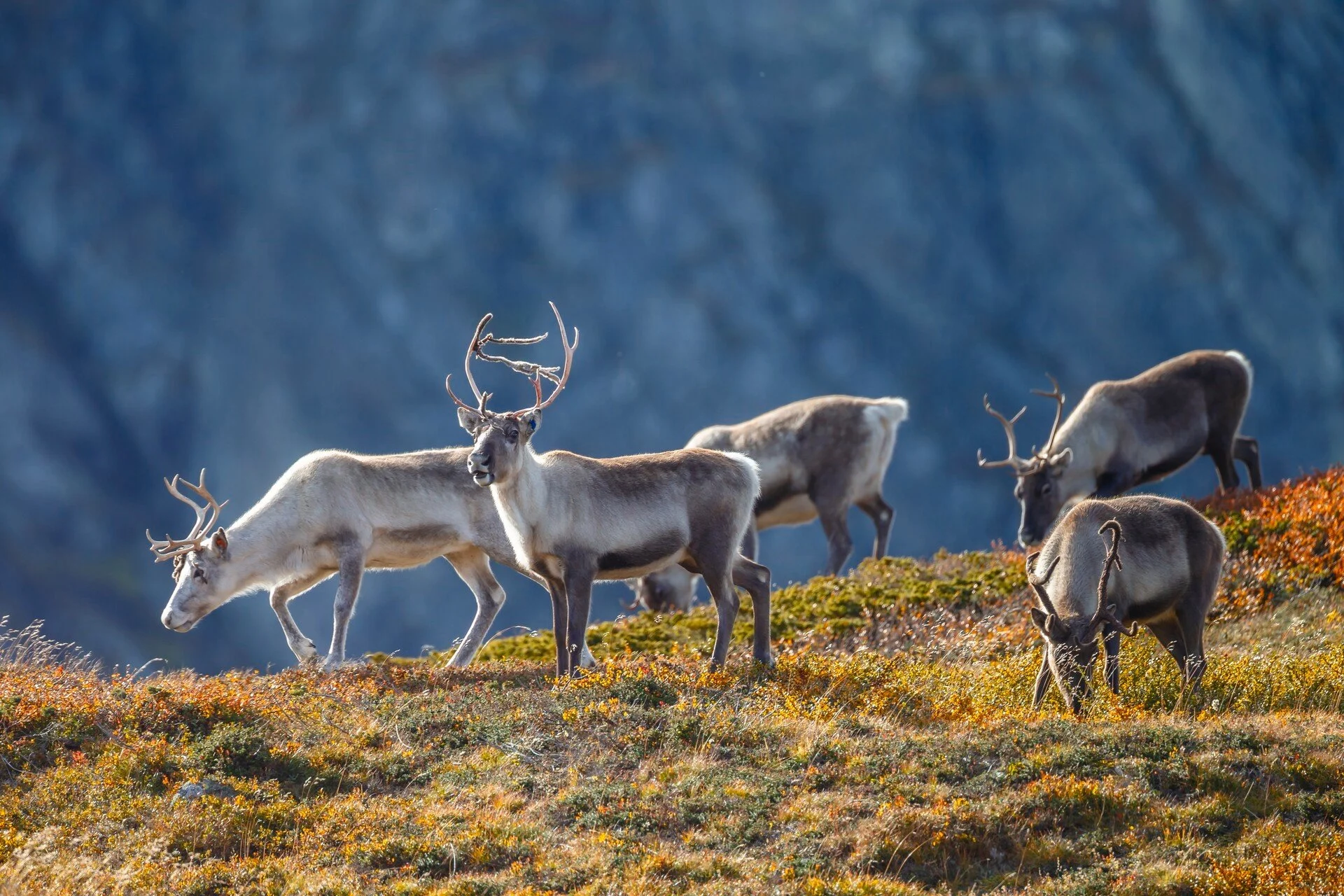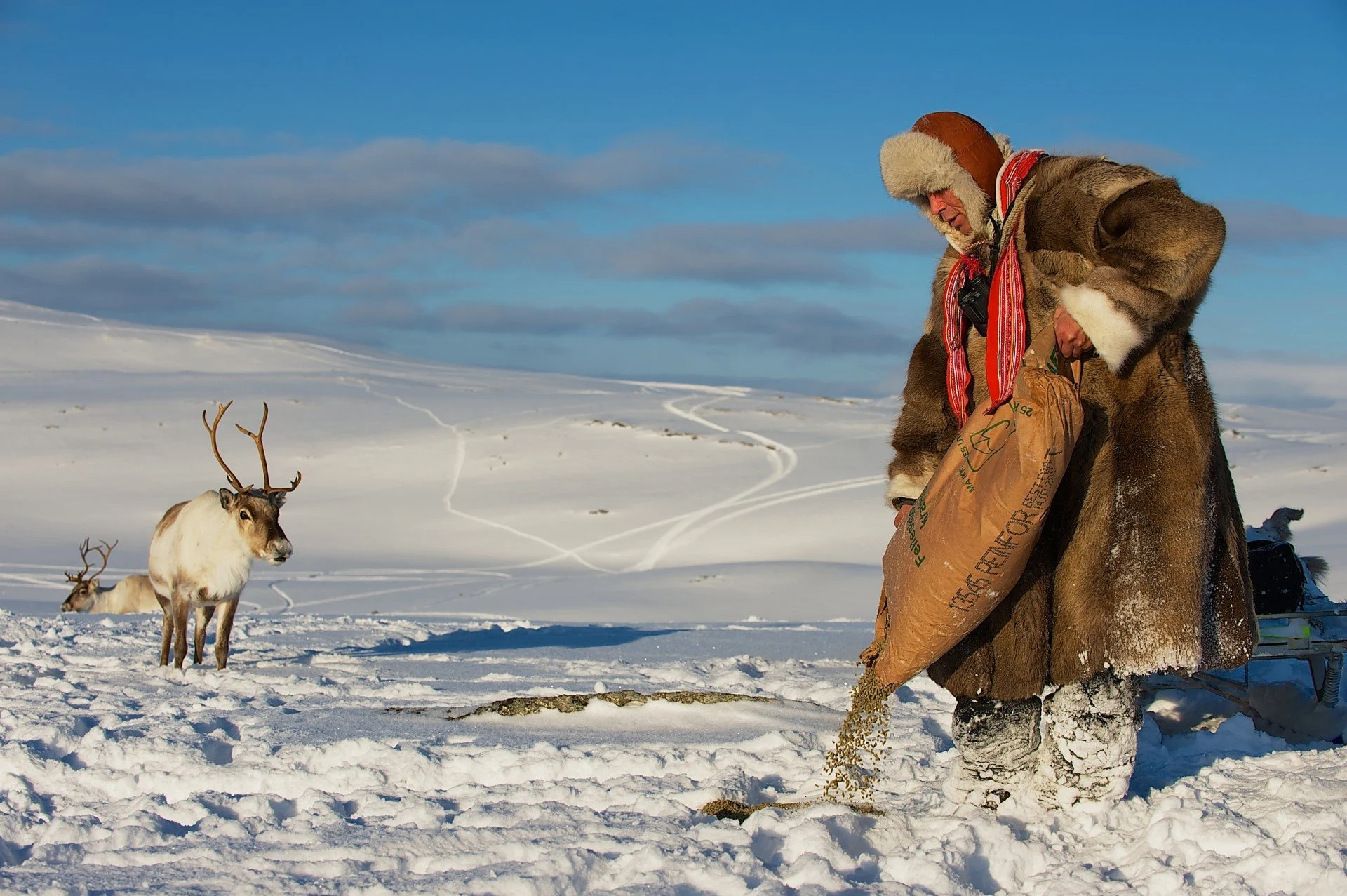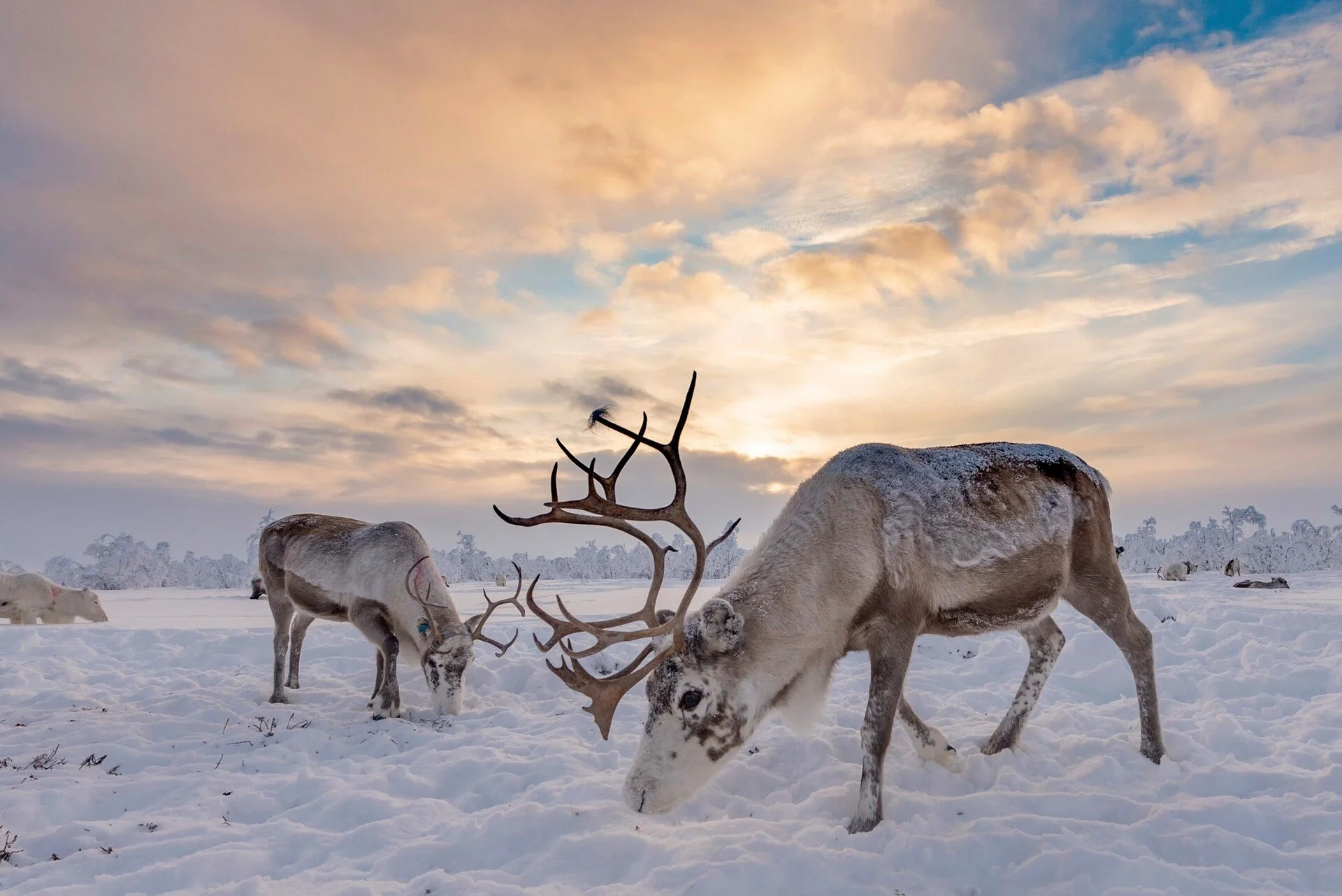
Reindeer in Norway
Reindeer and reindeer herding have been an important source of trade and a way of life in Norway for thousands of years.
A way of life
Essential for Sámi culture and life, the reindeer provides everything from clothes to food and is kept in herds that are moved long distances across vast land areas to the rhythm of changing seasons.
A tough deer
Reindeer are hardy creatures – which comes in handy in the cold and windy Norwegian steppes and mountains. Herds are reared for food, pelts, tools and for pulling sleds and wagons. Males normally weigh around 70–150 kg, while females are smaller at 40–100 kg. The calving season is April to June.
Both males and females have antlers which they grow every year. They feed on grass, leaves, herbs, reindeer lichen and even mushrooms, digging through the snow during winter.


Like herding reindeer
For the most part, it’s the Sámi people who herd reindeer in Norway. Traditionally, this used to be a nomadic operation, often moving the reindeer several hundred kilometres between summer and winter pastures.
As time passed, this nomadic way of living was largely replaced with just a summer residence and a winter residence.
Where is the best place to see reindeer in Norway?
Fossils and archaeological findings show that reindeer found their way into the country more than 12,000 years ago. There are estimated to be around 25,000 wild reindeer and more than 200,000 domesticated reindeer in Norway today.
The highest concentration of reindeer held as livestock is found on the Finnmark plateau, where for centuries Sámi people have been moving their herds back and forth from the interior to the coast.
